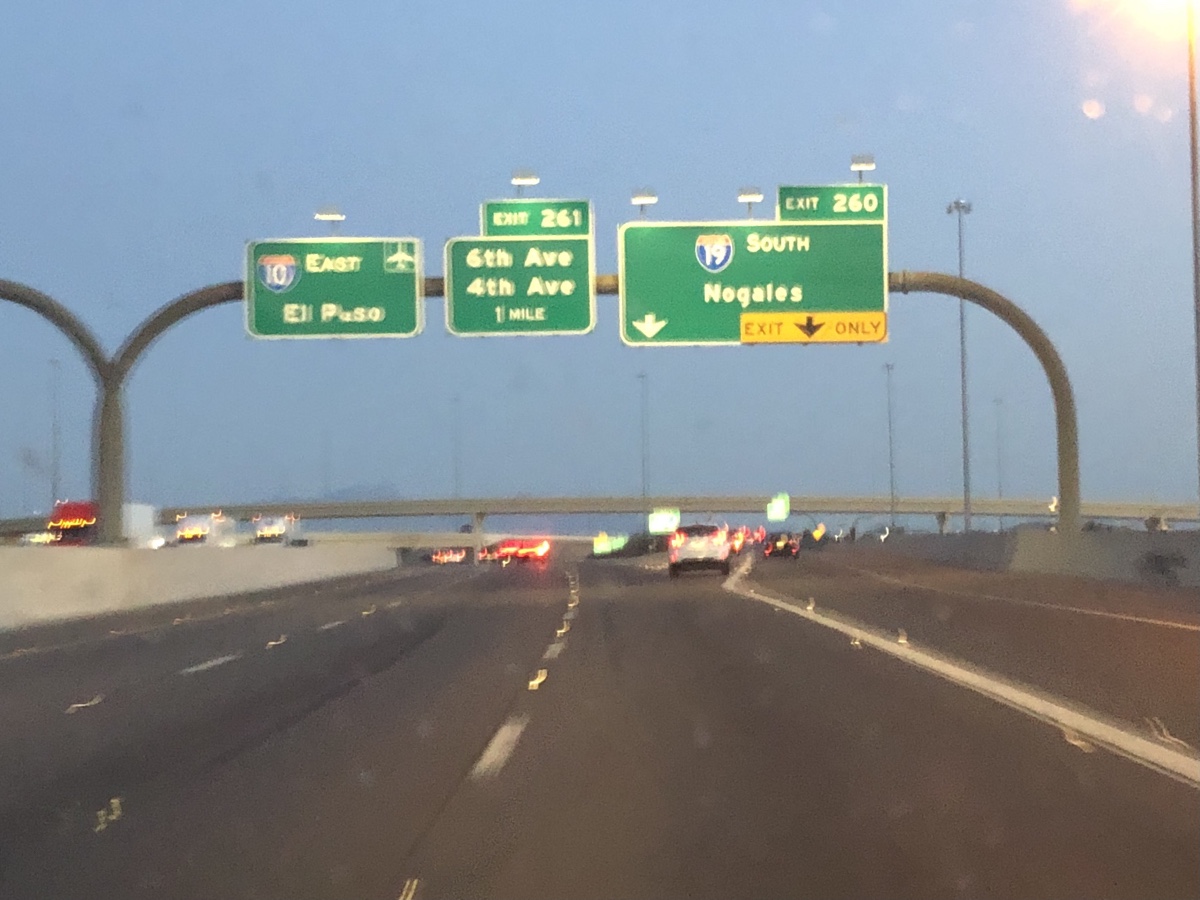
As a college trained (but not graduated) Civil Engineer, I have a strong interest in highway design and the flow of transportation infrastructure in general. After living in a major American city for several years, I can say without a doubt that I do not miss driving the streets or expressways of Chicagoland.
Tucson has pretty much resisted the freewayification of the city, and alas has but two Interstates passing through: Interstate 10 (which runs coast to coast from Los Angeles to Jacksonville, Florida) and Interstate 19, which is rather short for a two-digit numbered Interstate route as it’s less than 100 miles long as it heads to the Mexican border at Nogales. There’s a suggestion of an expressway along what was going to be Interstate 210, but it’s short and I’ve never seen it crowded.
Both of the main Interstates can get rather busy at rush hour here in Tucson, but for the most part I find them well designed and marked for what they are. I-10 could probably use an upgrade by adding a lane in each direction to the east of the city, but for the most part, traffic moves reasonably well. I’ve always been a fan of ADOT’s traffic engineering practices and getting to know these things a little more intimately, being an Arizona resident and all, is part of my general Road Geek happiness.
Some folks like to complain about the absence of freeways and loops here in Tucson, and granted I’m probably lucky because I don’t commute to work every day, but I don’t find getting around the city to be that bad. Everything is 20 to 30 minutes away from home. North, South, East, West, it doesn’t matter. It’s a half hour drive.
That’s half the amount of time it took for us to get anywhere in Chicago.
I’ve always found ADOT’s signing practices to be among the best in the United States, and that trend continues as they constantly replace sun-bleached signs. The brown “Attractions” signs don’t stand much of a change in the longevity department after a few years in the Sonoran Desert sun.